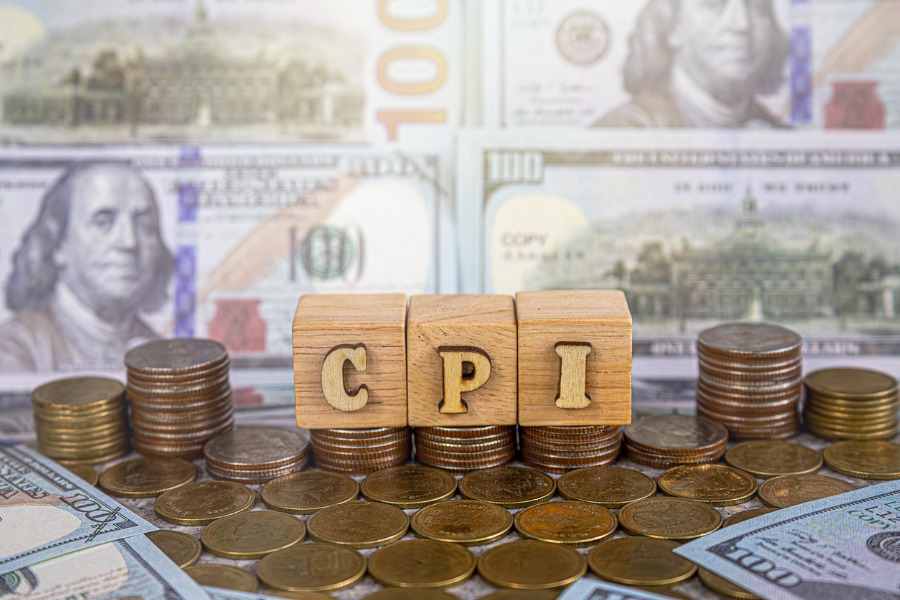

Underlying US inflation eased for a fourth month on an annual basis in July, keeping the Federal Reserve on track to lower interest rates next month.
The so-called core consumer price index — which excludes food and energy costs — increased 3.2% in July from a year ago, still the slowest pace since early 2021. The monthly measure rose 0.2%, a slight pickup from June’s surprisingly low reading, Bureau of Labor Statistics figures showed Wednesday.
Economists see the core gauge as a better indicator of underlying inflation than the overall CPI. That measure also climbed 0.2% from the prior month and 2.9% from a year ago. BLS said nearly 90% of the monthly advance was due to shelter, which accelerated from June.
Inflation is still broadly on a downward trend as the economy slowly shifts into a lower gear. Combined with a softening job market, the Fed is widely expected to start lowering interest rates next month, while the size of the cut will likely be determined by more incoming data.
“Investors and policymakers alike will find this report mostly good for markets and the economy,” said Jeffrey Roach, chief economist at LPL Financial. “As inflation decelerates, the Fed can legitimately cut rates yet keep policy restrictive overall.”
Before their September meeting, officials will get more inflation readings plus another jobs report — which will be heavily scrutinized after the disappointing July figures helped spark a global market selloff and fanned recession fears.
Fed Chair Jerome Powell and his colleagues have recently said they’re focusing more on the labor side of their dual mandate, which they’re likely to stress at their annual symposium in Jackson Hole, Wyoming next week.
The S&P 500 fluctuated and two-year Treasury yields — the most sensitive to Fed policy — rose. Traders assigned a lower probability of a 50-basis-point cut in September.
Prices fell last month for apparel, new and used cars, medical care services and airfares.
Though the figures are reported to one decimal point by the BLS, Fed officials and economists like to look further out for a better sense of the inflation trajectory. On a two-decimal basis, core CPI rose 0.17%. And to get a feel for the recent trend, the three-month annualized figure advanced 1.58%, the lowest since February 2021.
The most disappointing part of the report was shelter prices, which economists and policymakers have been widely expecting to ease and help move inflation closer to the Fed’s target. Shelter, the largest category within services, jumped 0.4% after 0.2% in June, which was the lowest since 2021 and thought to be the start of the long-awaited slowdown.
Within shelter, owners’ equivalent rent — the biggest individual component of the CPI — also rose 0.4%. Rent of primary residence climbed 0.5%, the most since February.
Other categories were more encouraging, particularly for consumers. Prices fell last month for apparel, new and used cars and airfares. Hospital services declined by the most on record. Gasoline prices have mostly dropped in recent months.
Meantime, subscription services for video games rose by the most ever after registering a steep decline in May.
What Bloomberg Economics Says...
“The soft CPI report will likely give Fed officials modestly more confidence that inflation is on the way down. Even though July’s core PCE inflation print won’t be as good, we expect the Fed to cut rates in September due to the rising unemployment rate.”
— Anna Wong and Stuart Paul.
Excluding housing and energy, service prices were up 0.2%, the first increase in three months but still a tame pace, according to Bloomberg calculations. While central bankers have stressed the importance of looking at such a metric when assessing the nation’s inflation trajectory, they compute it based on a separate index.
That measure, known as the personal consumption expenditures price index, doesn’t put as much weight on shelter as the CPI does — and that’s part of the reason why the PCE gauge is trending closer to the Fed’s 2% target.
The PCE measure, released later this month, draws from the CPI as well as certain categories within the producer price index. Those parts of the PPI were fairly tame in July, and the headline figures rose by less than forecast, according to government data out Tuesday.
Part of the lower PPI reading stemmed from weaker margins at wholesalers and retailers — corroborating companies’ assertion that they’re losing pricing power as well as recent discounting and promotional activity like Amazon.com Inc.’s Prime Day. From restaurants to airlines, businesses recognize that consumers are growing more discerning in their spending, particularly for discretionary purchases.
A sustained decline in the price of goods over most of the past year has largely been providing some relief to consumers. So-called core goods prices, which exclude food and energy commodities, fell by the most since the start of the year. On an annual basis, they dropped by the most since 2004.
A separate report Wednesday that combines the inflation figures with recent wage data showed that real earnings growth decelerated in July from a year ago.

It's a showdown for the ages as wealth managers assess its impact on client portfolios.

CEO Ritik Malhotra is leveraging Savvy Wealth's Fidelity partnership in offers to Commonwealth advisors, alongside “Acquisition Relief Boxes” filled with cookies, brownies, and aspirin.

Fraud losses among Americans 60 and older surged 43 percent in 2024, led by investment schemes involving crypto and social manipulation.

The alternatives giant's new unit, led by a 17-year veteran, will tap into four areas worth an estimated $60 trillion.

"It's like a soap opera," says one senior industry executive.
RIAs face rising regulatory pressure in 2025. Forward-looking firms are responding with embedded technology, not more paperwork.
As inheritances are set to reshape client portfolios and next-gen heirs demand digital-first experiences, firms are retooling their wealth tech stacks and succession models in real time.
